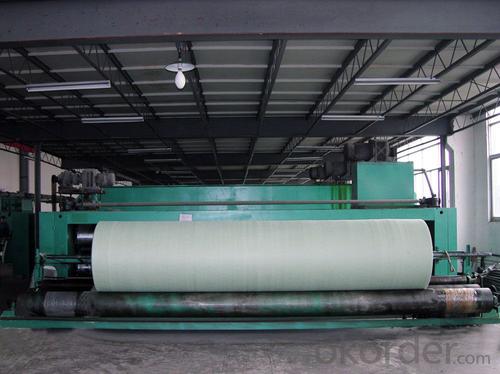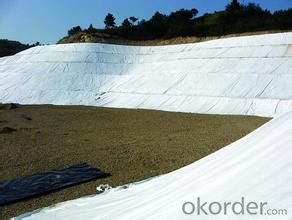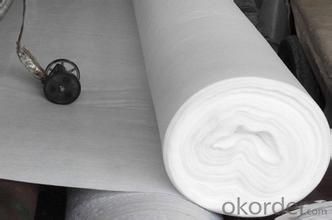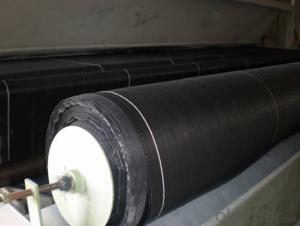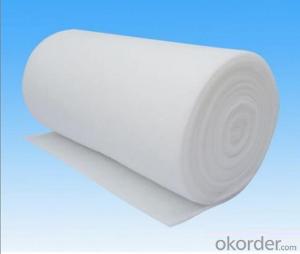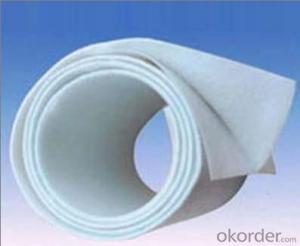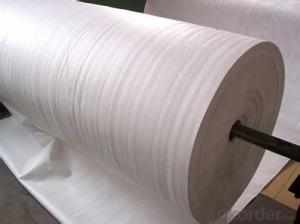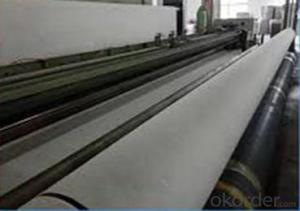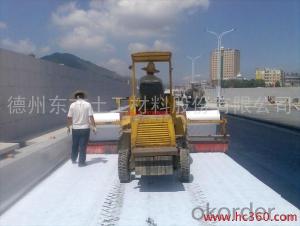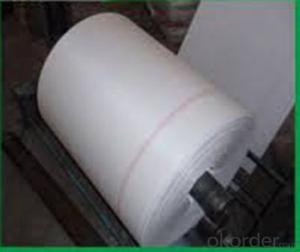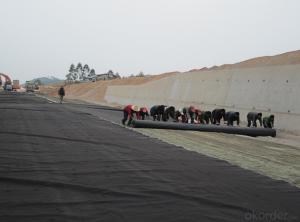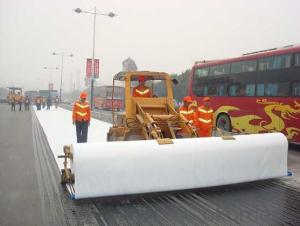Geotextile Tissé Ou Non Tissé - Highway Construction New Kind Material 200gsm Needle Punched Geotextile
- Loading Port:
- Tianjin
- Payment Terms:
- TT OR LC
- Min Order Qty:
- 10000 m²
- Supply Capability:
- 300000 m²/month
OKorder Service Pledge
OKorder Financial Service
You Might Also Like
Description of New Kind Material 200gsm Needle Punched Geotextile
Our factory covers an area of 26000 square meters, there are more than 150 staffs ,among them, there are 30 technicians .many of them have been in this line more than 20 years .so we have confidence to give you our the high quality products and lowest price.
Main Features of New Kind Material 200gsm Needle Punched Geotextile
A:We can produce the raw materials, so we can control the cost better. Our price very comperitive .
B:We supply our products to many big national project in china , Our quality is very stable .
C: We have our own research team and our own laboratory , so we can continuous improvement process and ensure the quality
Specifications of New Kind Material 200gsm Needle Punched Geotextile
Geotextile Specification
1) Weight / Mass: 75g/m2-800g/m2 .
2) Width: Within 8 m (1m-8m).
3) Length: 50m-100m/roll (as request).
4) Material: PP/PET.
5) Color: Black , white , grey, others
6) Certificate: CE/ISO9001, ISO14001 .
7) Manufacturing method: nonwoven / woven.
Technical index of the Plastic woven film yarn geotextile
Item | Index | ||||||
20-15 | 30-22 | 40-28 | 50-35 | 60-42 | 80-56 | 100-70 | |
Breaking strength at warp direction (kN/m) ≥ | 20 | 30 | 40 | 50 | 60 | 80 | 100 |
Breaking strength at weft direction (kN/m) ≥ | 15 | 22 | 28 | 35 | 42 | 56 | 70 |
Elongation at break (%) ≤ | 28 | ||||||
Trapezoid tearing strength( warp direction ) (kN) ≥ | 0.3 | 0.45 | 0.5 | 0.6 | 0.75 | 1.0 | 1.2 |
Bursting strength (kN) ≥ | 1.6 | 2.4 | 3.2 | 4.0 | 4.8 | 6.0 | 7.5 |
Vertical permeability coefficient (cm/s) | 10-1~10-4 | ||||||
Effective pore size O95,mm | 0.08~0.5 | ||||||
Mass per unit area (g/m2) | 120 | 160 | 200 | 240 | 280 | 340 | 400 |
Mass error in unit area (%) | ±10 | ±10 | ±10 | ±10 | ±10 | ±10 | ±10 |
Applications of Plastic Woven Geotextile for Dam
Used in dam, tunnel, reservoir, channel and roofing for anti-leakage, It laso used in scrap yard protection.
Images of New Kind Material 200gsm Needle Punched Geotextile
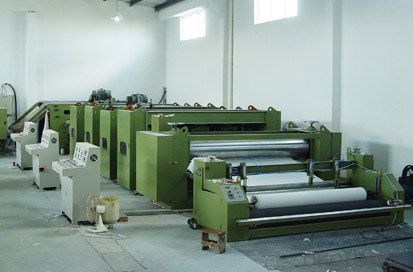
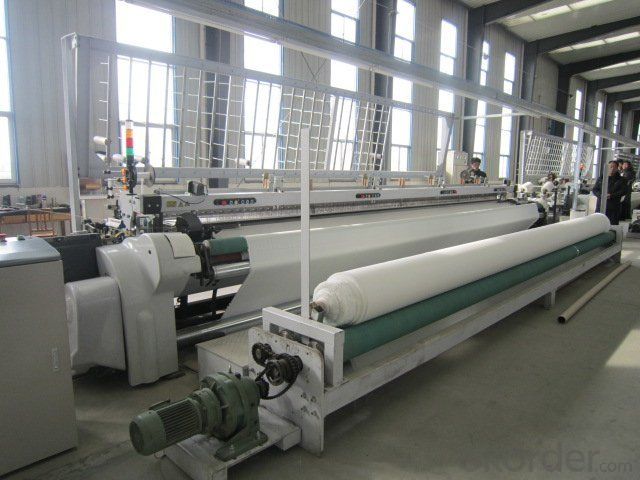
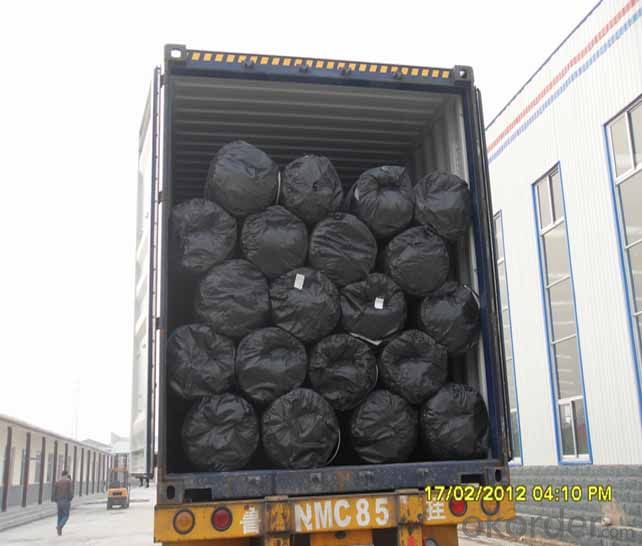
RFQ
1. Do you supply free samples for customers?
Yes,we will supply free samples for you.Please send your address for us.
2. How Many years experience do you have?
We have been exported to more than 20 countries in the past 15 years.
3. How long do we usually reply your request?
We always reply our customer within 24 hours.
- Q: Geotextile what is the law?
- Geotextile, also known as geotextile, it is made of synthetic fiber through acupuncture or woven from the permeability of geosynthetics. The American Society of Agricultural Engineers defines geotextiles as geotextiles or geosynthetics that exist between soils and pipelines, gages, or retaining walls that enhance water movement and impede soil movement. ASTM 4439 standard geotextile is defined as: a purely permeable geosynthetics to form textiles. Is used in soil, rock, soil or other geotechnical engineering related materials and acts as a component of a human-made project. Geotextile is a new type of building materials, raw materials are polyester, polypropylene, acrylic, nylon and other polymer polymer synthetic fiber. In accordance with the manufacturing method is divided into: there are two types of geotextile and non-woven geotextile. General engineering is mainly used non-woven geotextile. Geotextile with filter, filter, isolation, reinforcement, protection, sealing and other functions.
- Q: What are the advantages of using geotextiles in road construction?
- There are several advantages of using geotextiles in road construction. Firstly, geotextiles act as a barrier between the subgrade and the base material, preventing the mixing of the two layers. This helps in maintaining the stability and quality of the road. Secondly, geotextiles help in distributing the load more evenly across the road surface, reducing the stress on the underlying layers and increasing the lifespan of the road. Additionally, geotextiles can improve the drainage system by allowing water to flow through them, preventing the accumulation of water and reducing the chances of road damage due to moisture. Lastly, geotextiles are cost-effective and easy to install, saving both time and money in road construction projects. Overall, the use of geotextiles in road construction enhances the durability, strength, and performance of the road, making it a beneficial choice for infrastructure development.
- Q: Can geotextiles be used in landscaping?
- Yes, geotextiles can be used in landscaping. Geotextiles are commonly used in landscaping projects as a way to control erosion, stabilize soil, and prevent weed growth. They are particularly useful in areas where there is heavy rainfall or sloping terrain, as they help to retain soil and prevent erosion. Additionally, geotextiles can be used to separate different layers of soil, provide drainage, and reinforce structures such as retaining walls.
- Q: What are the factors that affect the strength of geotextiles?
- The strength of geotextiles can be affected by several factors such as the type and quality of materials used, the manufacturing process, the weight and thickness of the geotextile, the presence of any coatings or treatments, and the installation and environmental conditions in which the geotextile is used.
- Q: What are the advantages of using geotextiles in soil erosion prevention?
- Geotextiles offer several advantages in soil erosion prevention, including increased soil stability, improved drainage, and enhanced filtration. These synthetic materials can effectively reinforce soil, preventing its movement and erosion. Geotextiles also allow water to pass through while trapping sediment, reducing the risk of erosion and maintaining the integrity of the soil. Additionally, they are easy to install and cost-effective, making them a practical solution for erosion control in various applications.
- Q: What are the different geotextile testing parameters?
- Some different geotextile testing parameters include tensile strength, puncture resistance, burst strength, permittivity, apparent opening size, and UV resistance.
- Q: What is the role of geotextiles in road construction?
- Geotextiles play a crucial role in road construction by providing reinforcement, filtration, and separation functions. They are used to enhance the stability and longevity of roads by preventing the mixing of different soil layers, reducing erosion and maintaining proper drainage. Additionally, geotextiles help to distribute loads more evenly, preventing the formation of cracks and potholes, thus improving the overall performance and durability of the road.
- Q: Can geotextiles be used in underground drainage systems?
- Yes, geotextiles can be used in underground drainage systems. They are commonly used to improve the filtration and separation functions of the system by preventing soil particles from clogging the drainage pipes. Geotextiles also provide additional stability to the system and enhance its overall performance.
- Q: Geotextile price
- I am specializing in the production of geotextile and other materials, wish smooth
- Q: What are the different geotextile installation techniques in erosion control?
- There are several geotextile installation techniques used in erosion control, including trench installation, slope installation, and blanket installation. Trench installation involves placing geotextile fabric in a trench along the slope to prevent soil erosion. Slope installation involves placing geotextile fabric on the surface of a slope to stabilize the soil and prevent erosion. Blanket installation involves placing geotextile fabric over a large area, such as a construction site or a riverbank, to provide erosion control and sediment filtration. Each technique has its own advantages and is chosen based on the specific erosion control needs of the site.
Send your message to us
Geotextile Tissé Ou Non Tissé - Highway Construction New Kind Material 200gsm Needle Punched Geotextile
- Loading Port:
- Tianjin
- Payment Terms:
- TT OR LC
- Min Order Qty:
- 10000 m²
- Supply Capability:
- 300000 m²/month
OKorder Service Pledge
OKorder Financial Service
Similar products
Hot products
Hot Searches
Related keywords






